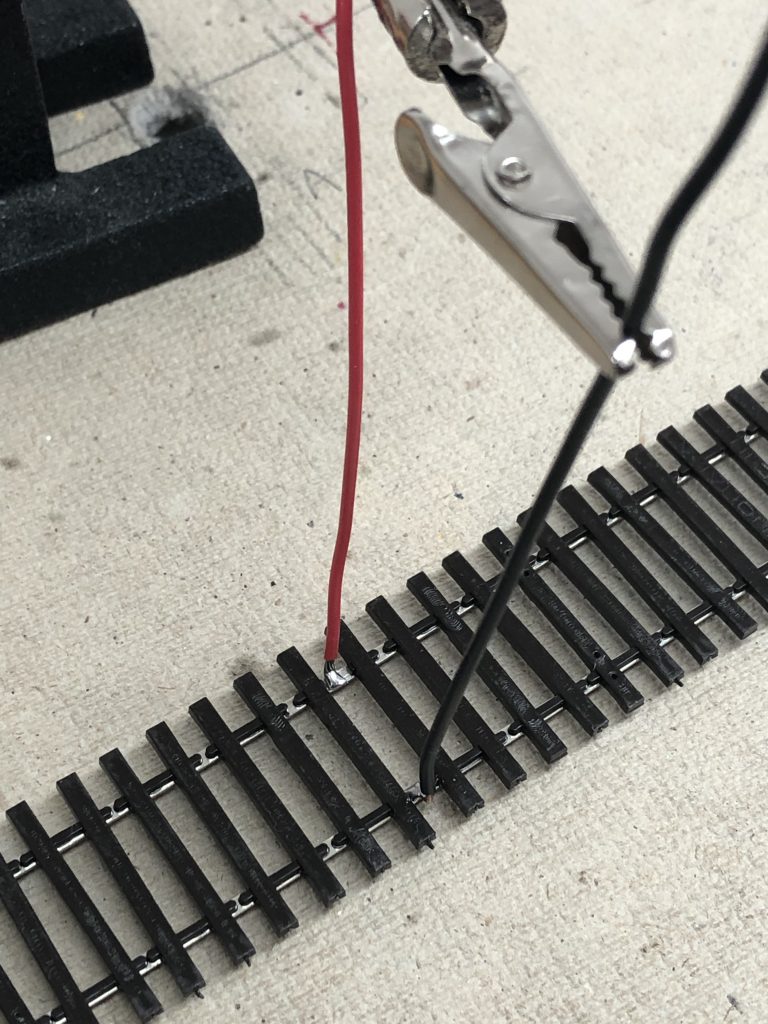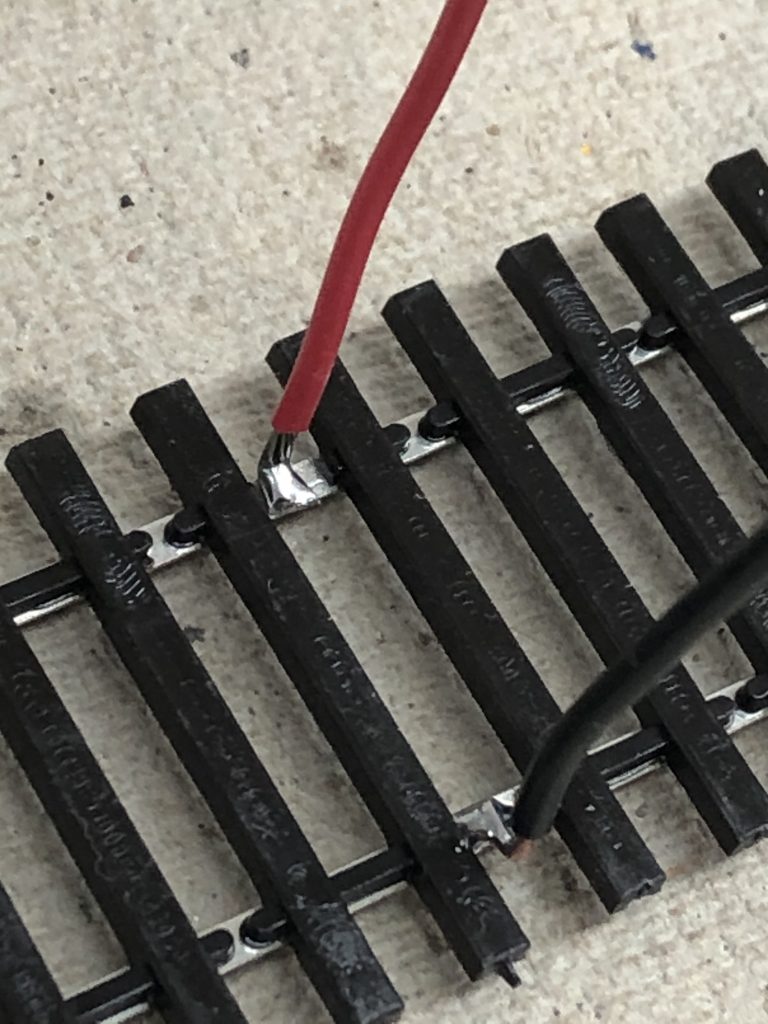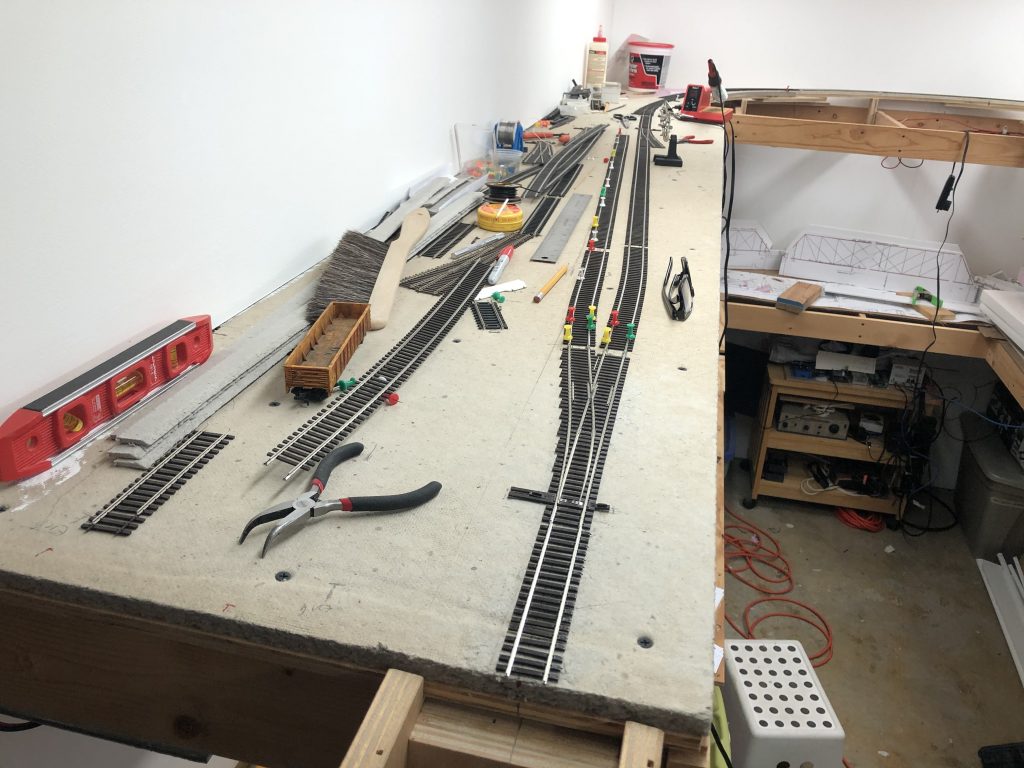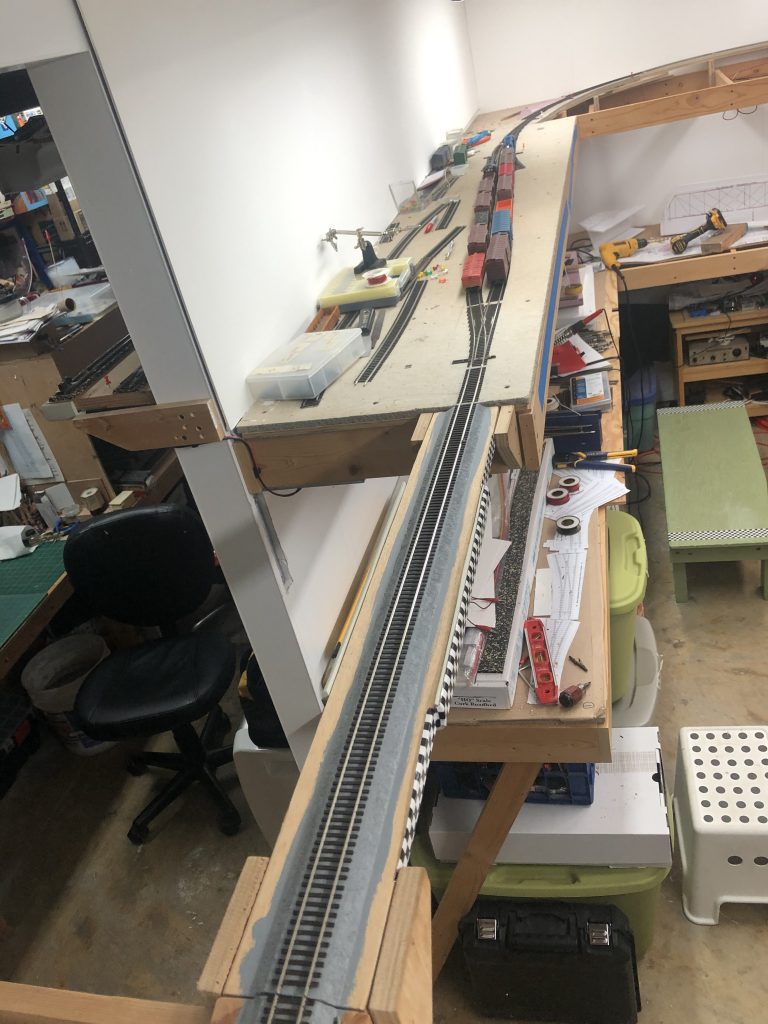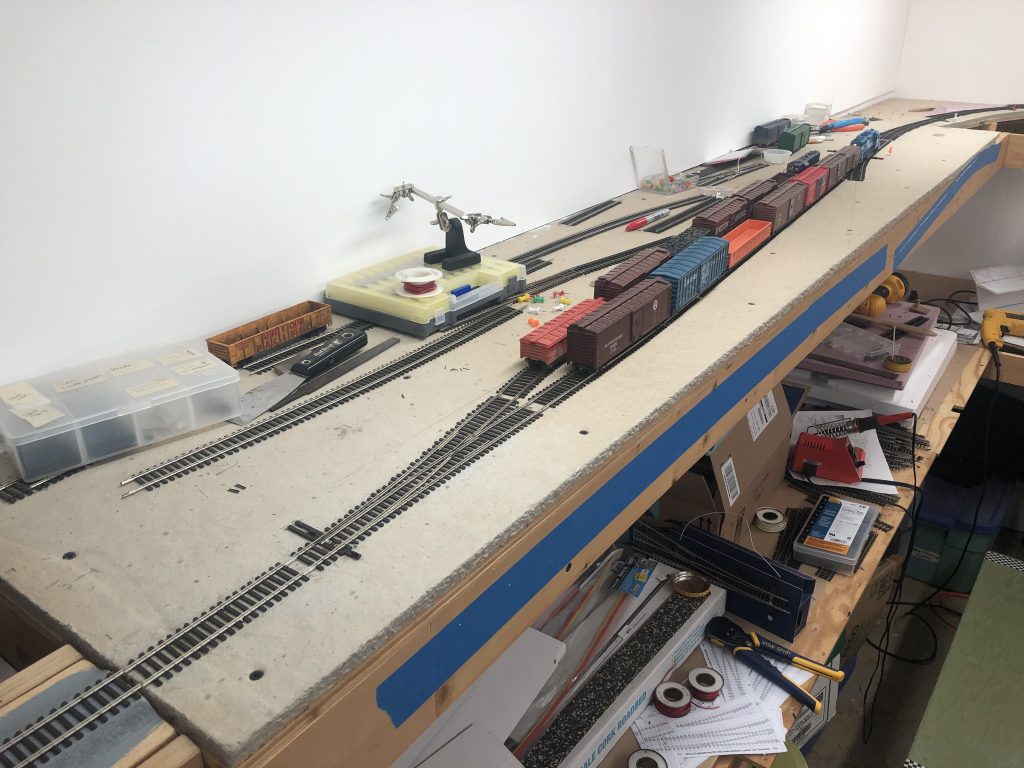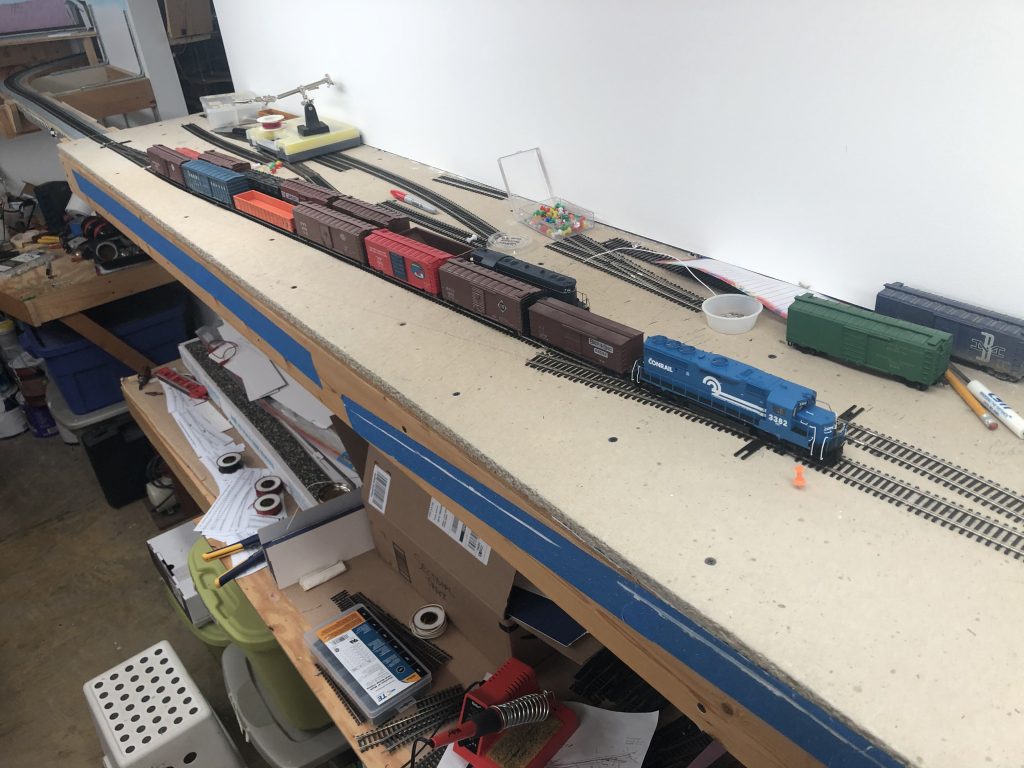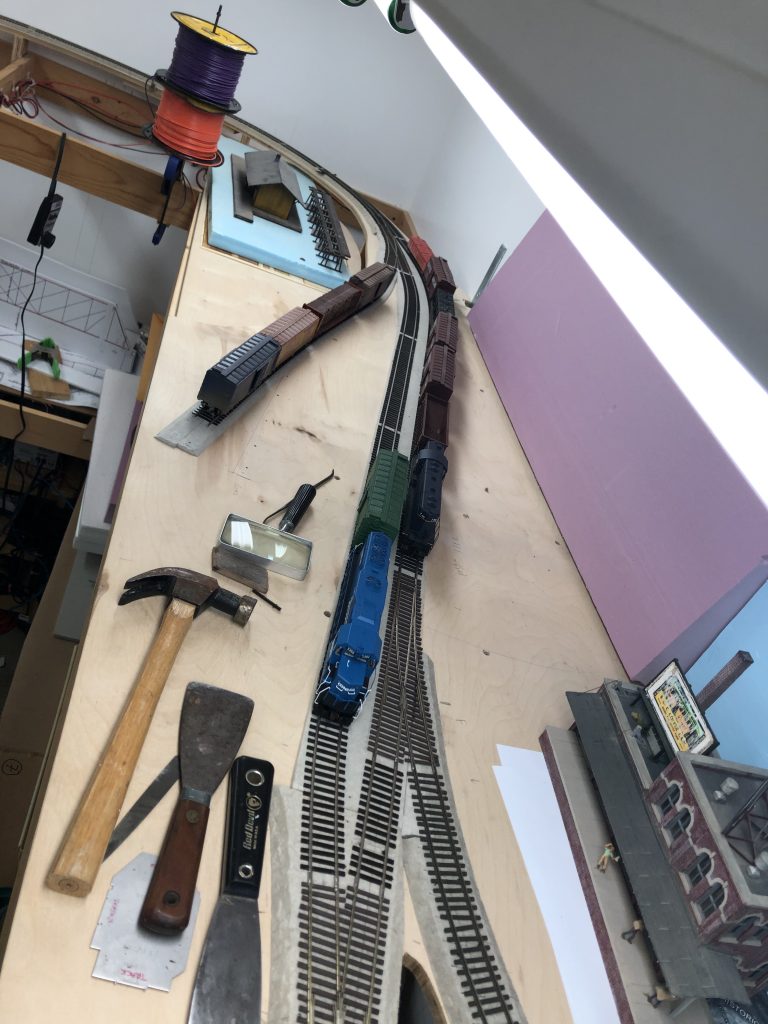It has been a busy last week of working on the layout. Last weekend I spent much of the time getting the three curved turnouts that lead into Bethesda in place and working properly. This involved quite a bit of work; test fitting, cutting ties, staining them, painting the turnouts, installing tie templates, installing ties, sanding, laying in the turnouts, fitting them, cutting them to length, attaching feeders and drilling holes for them along with holes for the switch machines. Once in place, lots of sighting and adjusting was done with the tracks in Bethesda before spiking things down and testing some cars on the track. A bit of filing here and there and we are in business.
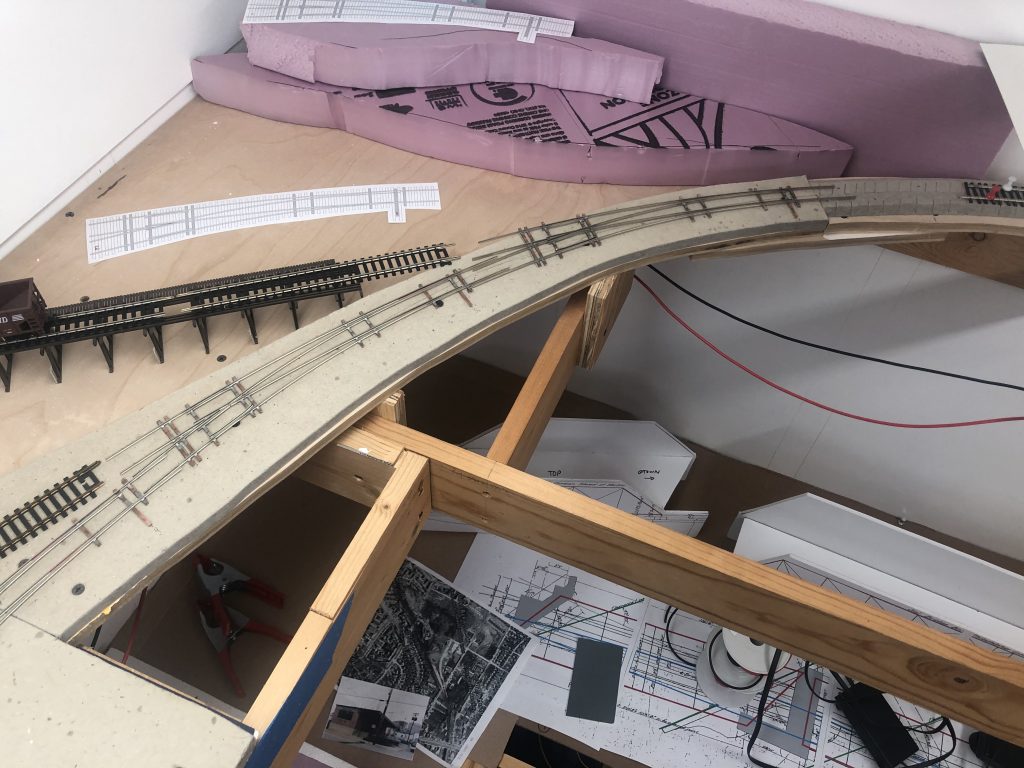
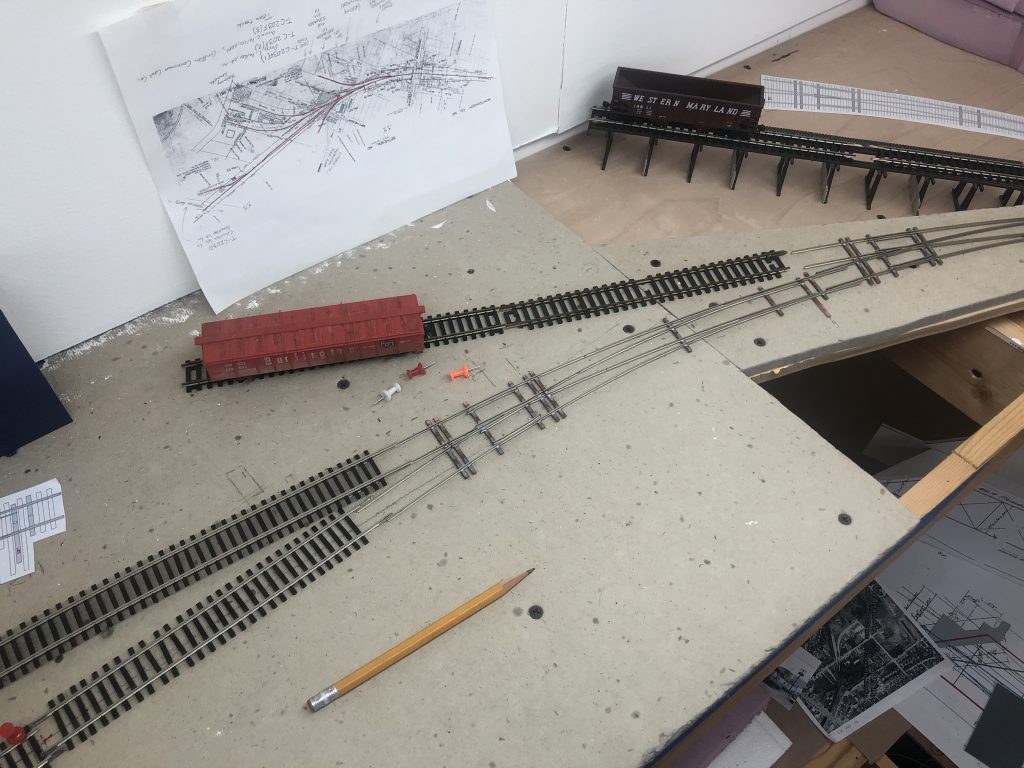
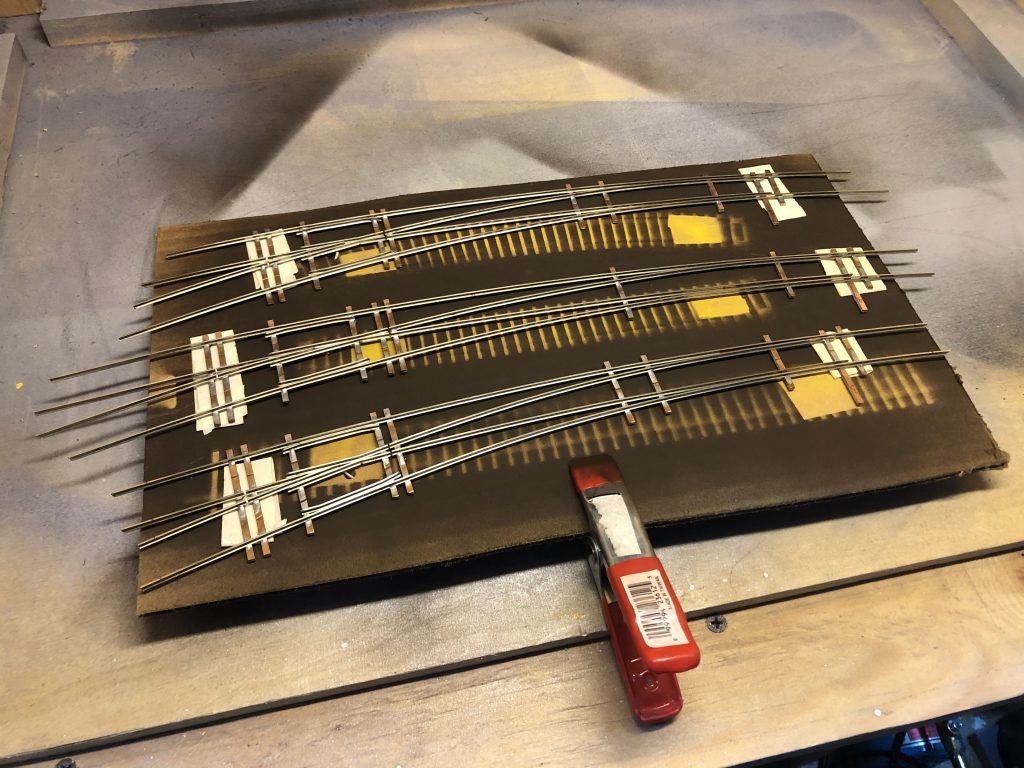
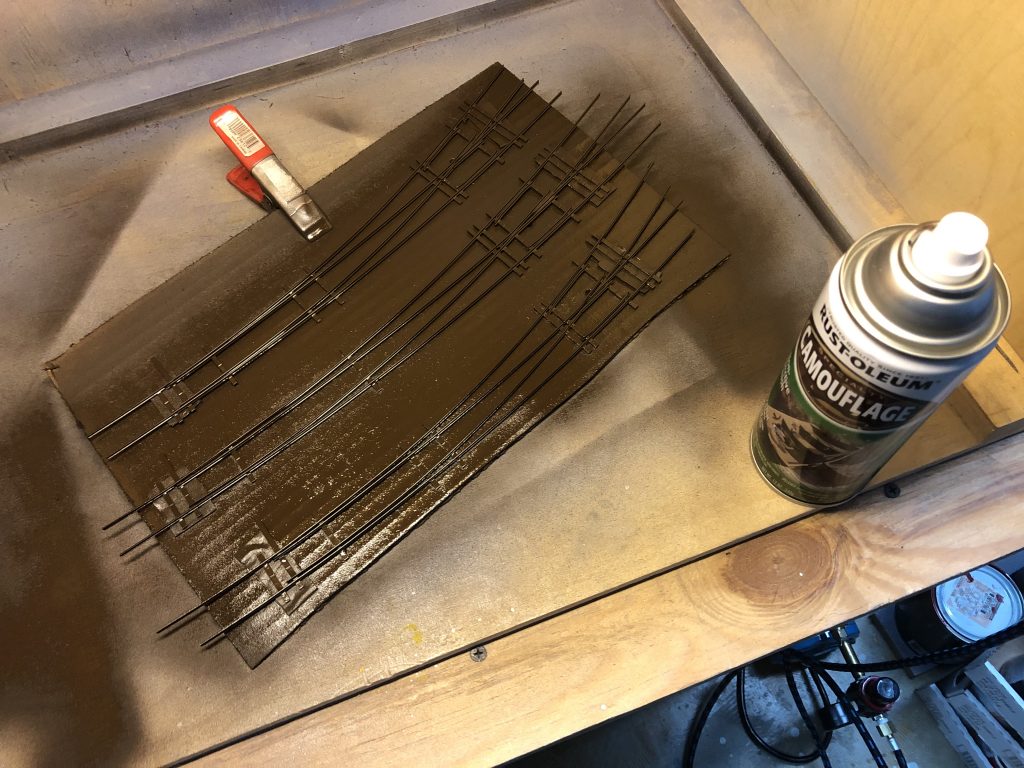
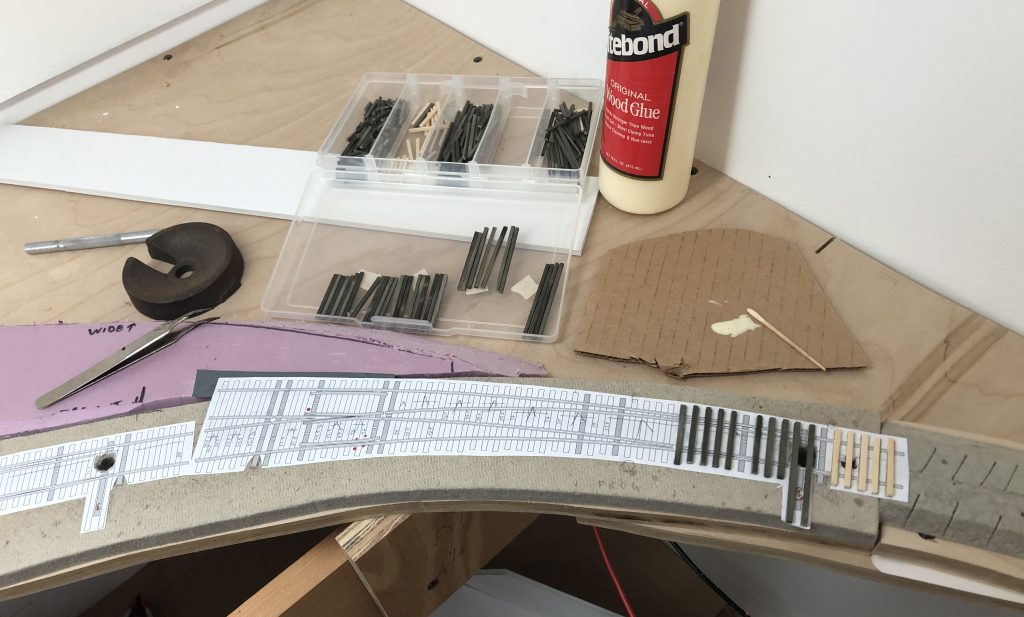
Beginning to install ties. Each bay in that box holds a set of ties for a turnout. I cut them all on the workbench using The Chopper, stained and dried them. I then laid them out in order (seen here) and installed with wood glue, one by one. Ties were weighted down as I went along.
The three turnouts are sized as follows from top to bottom: #8 50″ outside radius, 35″ inside radius, #8 60″/40″, and #10 60″/46″.
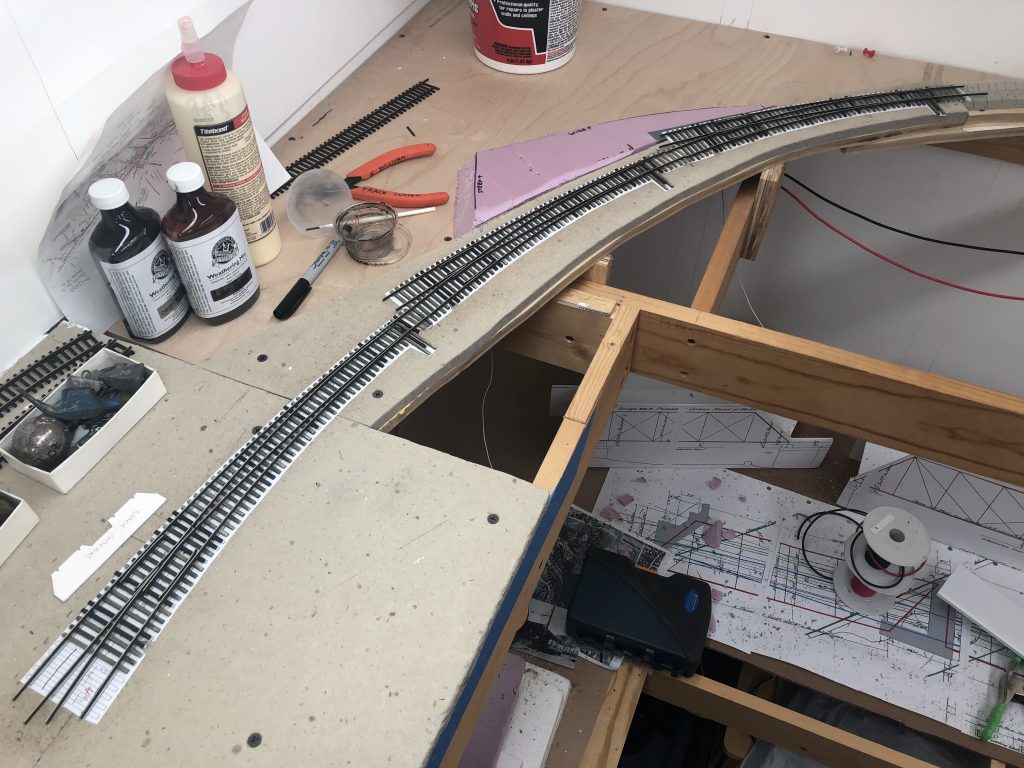

Soldering Feeder Wires
Some folks have asked me how I do feeder wires, so here is a quick illustration. A good friend, Matt R., convinced me to solder feeder wires to the bottom of the rails instead of the sides. This method leaves a clean look with no unsightly wires poking out, globbed onto the rails. It does take a bit of extra work, but once you get into a rhythm it goes fast. Here is my setup:
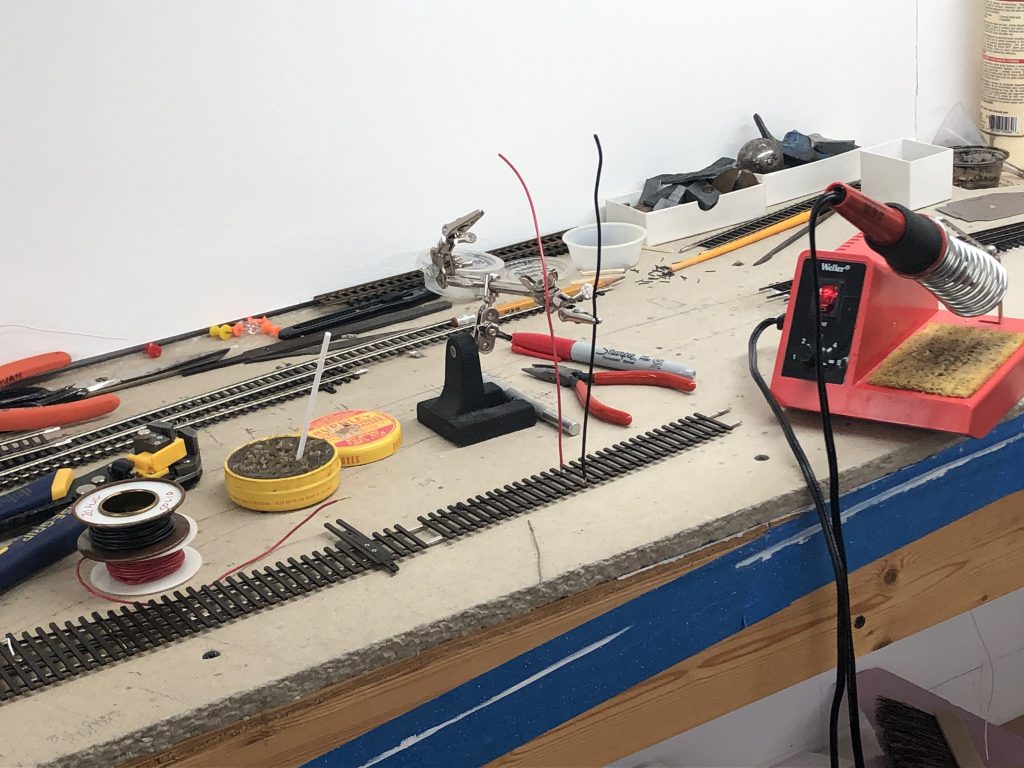
I will typically mark the locations on the roadbed where I want the feeders to drop. This is done by marking each side of the rail and then the tops of the rail. Remove the piece of rail and drill a hole for each feeder. Flip the rail over. With the X-Acto, snip the small plastic spacers between the ties where you will solder the feeder. Strip about 1/8″ of insulation from the end of a feeder and bend it 90°. Using a micro-applicator, put a tiny bit of flux on the wire and the bottom of the rails. Straighten the wire and clip it in the helping-hands, positioning it so that the bare end is just barely pressed onto the rail. Now, using your soldering iron, place a tiny bit of solder onto the end of it. Then, press the iron and your solder into the joint and release after it flows onto the rail itself. This should only take a few seconds, most. You don’t want to melt the ties!
